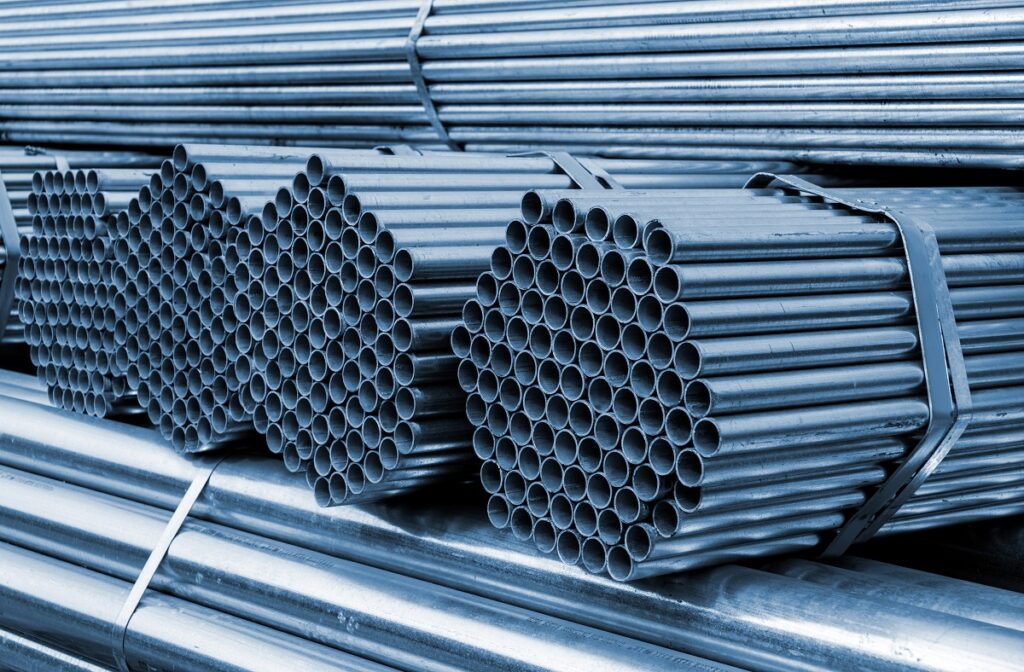When you are planning to purchase steel pipes, you may have become confused between these two types of pipes: stainless steel and galvanized pipes, which appear to be identical but have differences.
We will explain the differences between galvanized and stainless steel in the simplest terms possible for you to understand their distinctions and be able to decide which type of steel is ideal for you before buying.
Before getting into their differences, let’s first know what are these two top-quality steel pipes and differentiate the two.
What is Galvanized Steel?
Galvanized steel is coated with a thin layer of zinc. Rust is prevented from forming on the steel underneath by the zinc that is coated. It is used to make nails, screws, and bolts resistant to deterioration when exposed to the elements. As long as the water is not salt water, galvanized steel holds up well to moisture. Galvanized steel can be worked on by steel plate welders, but they will need to wear respiratory protection when making.
What is Stainless Steel?
Stainless steel is made by mixing molten steel to create stainless steel. When exposed to water, stainless steel maintains its strength and resistance to rust. Stainless steel won’t rust in seawater, either. Working with stainless steel requires specific welding skills since it requires much greater control during the heating and cooling process and matching all conductive fillers with the metal being welded. There are various varieties of stainless steel, including precipitation-hardening, austenitic, ferritic, martensitic, and duplex types. The metal alloy that makes up the composition of steel affects all of these various kinds. The strength of an alloy increases with complexity, as well as the cost.
Price
Stainless steel pipes will almost always cost more than galvanized pipes, though exact price discrepancies may depend on the market conditions. One of the main factors favoring galvanized pipes over the stainless steel ones is its cost. Galvanized pipes offer a reliable substitute for stainless in many situations where long-term use is not essential or the components won’t be subjected to heavy use or damage. Each metal can be recycled, however, galvanized steel is frequently converted into more common steel, which requires a second galvanized process. Stainless steel may be recycled more easily by traveling from solid to molten and back again while being watched over and adjusted to remove any impurities or change the alloy in the right manner.
Strength
Structures must consider the issue of resistance before beginning any construction. Comparing stainless steel to the common irons used to make galvanized building parts, the mechanical qualities of stainless steel are remarkably distinctive The yield point of stainless steel is higher than that of the majority of carbon steels. It can withstand distortion longer than other steels. Additionally, unlike carbon steel, it doesn’t fall simultaneously.
Lifespan
Galvanized steel’s zinc coating might wear away owing to abrasion or salts in hard water, but stainless steel has a longer lifespan. Stainless steel will endure longer in the same corrosive environment than galvanized pipes, which can only be used for a short period of time until the zinc is gone. When the durability of the building project is important, utilizing stainless steel is advised because it lasts far longer than galvanized steel. Compared to hot-dipped galvanized steel, stainless steel is substantially stronger.
Application
They are both typically utilized in corrosive conditions. They differ in terms of strength and resistance to corrosion, though. In places with moisture and humidity, such as metal roofs for homes and chain link fencing, galvanized steel is utilized. Due to its higher cost and greater durability, stainless steel is utilized in high-end objects like buildings, bridges, sculptures, monuments, cars, trains, and airplanes as well as other big projects that call for numerous heavy lifting or thick components. While Galvanized steel is used in the construction of buildings, and dwellings, pipelines and fittings, framing and construction, ornamental fencing, nuts, nails, washing machines, bolts, dishwashers, and so on.
Key Takeaway
You should now realize by now that even though having a similar appearance, these two varieties are distinct from one another and each has a unique set of benefits that may be used to suit a person’s needs. Since both steels have different benefits and drawbacks, there is no simple answer as to which type is ideal for your usage. However, in general, we can declare that stainless steel is a preferable choice if you’re looking for a sturdy, erosion- and rust-proof metal. Unlike galvanized, which may lose its exterior zinc covering, it is more effective at preserving the metal. But when it comes to cost-effectiveness, galvanized steel performs better because it can be produced and worked like regular steel. Hopefully, after reading their differences you are in a good position to make a decision with your selection that can serve its purpose and its application.


